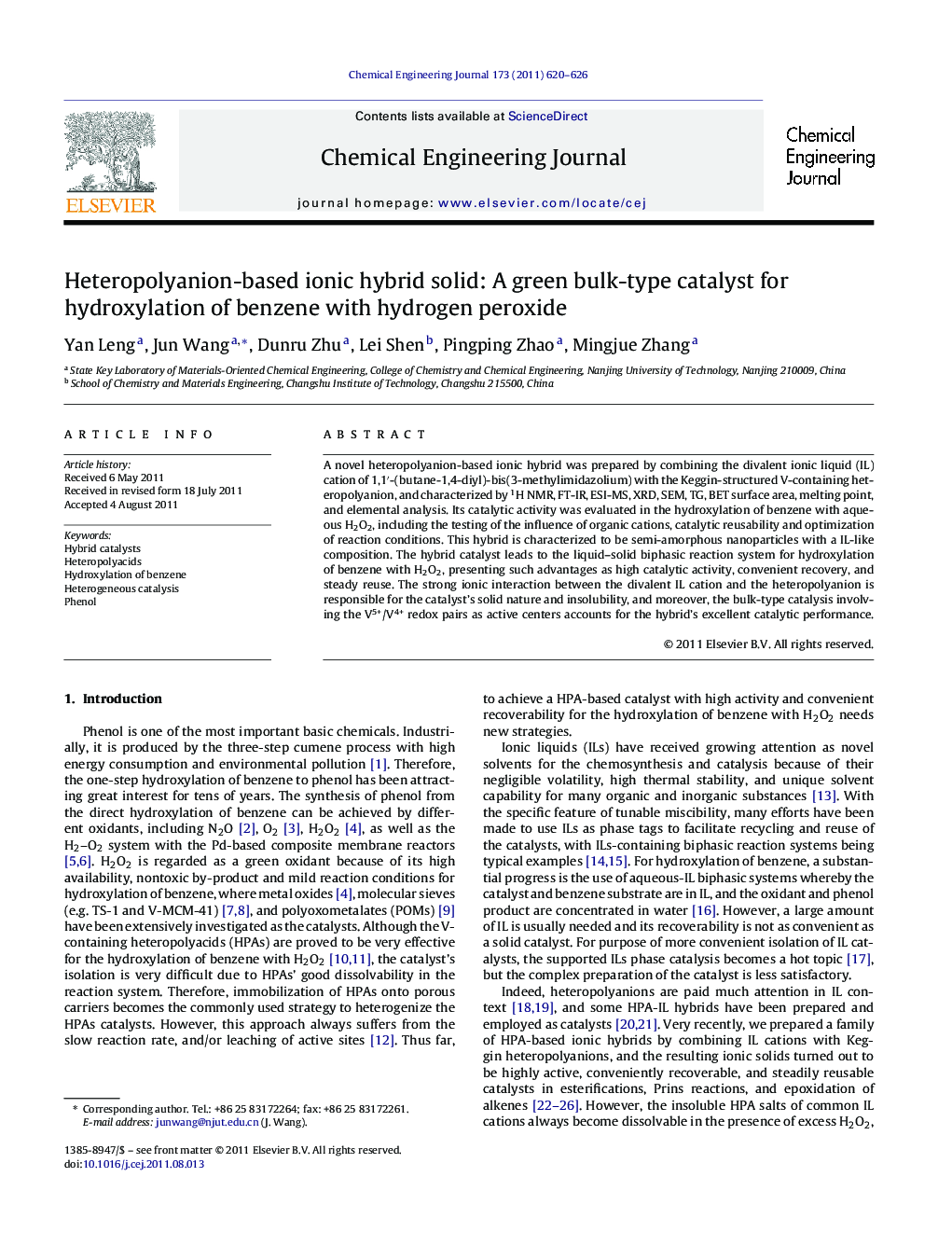| Article ID | Journal | Published Year | Pages | File Type |
|---|---|---|---|---|
| 150749 | Chemical Engineering Journal | 2011 | 7 Pages |
A novel heteropolyanion-based ionic hybrid was prepared by combining the divalent ionic liquid (IL) cation of 1,1′-(butane-1,4-diyl)-bis(3-methylimidazolium) with the Keggin-structured V-containing heteropolyanion, and characterized by 1H NMR, FT-IR, ESI-MS, XRD, SEM, TG, BET surface area, melting point, and elemental analysis. Its catalytic activity was evaluated in the hydroxylation of benzene with aqueous H2O2, including the testing of the influence of organic cations, catalytic reusability and optimization of reaction conditions. This hybrid is characterized to be semi-amorphous nanoparticles with a IL-like composition. The hybrid catalyst leads to the liquid–solid biphasic reaction system for hydroxylation of benzene with H2O2, presenting such advantages as high catalytic activity, convenient recovery, and steady reuse. The strong ionic interaction between the divalent IL cation and the heteropolyanion is responsible for the catalyst's solid nature and insolubility, and moreover, the bulk-type catalysis involving the V5+/V4+ redox pairs as active centers accounts for the hybrid's excellent catalytic performance.
Graphical abstractA new heteropolyacid (HPA)-based ionic hybrid nanospheric catalyst is synthesized by combining divalent ionic liquid (IL) cations with Keggin heteropolyanions, leading to liquid–solid biphasic hydroxylation of benzene with H2O2, and offering advantages of high catalytic activity, convenient recovery, steady reuse, and simple preparation.Figure optionsDownload full-size imageDownload as PowerPoint slideHighlights► A new ionic hybrid is prepared with dicationic ionic liquid and heteropolyacid. ► The hybrid catalyst leads to the heterogeneous hydroxylation of benzene with H2O2. ► The hybrid catalyst gives high phenol yield and selectivity in the hydroxylation. ► The catalyst shows convenient recovery, steady reuse, and simple preparation. ► The bulk-type catalysis accounts for the hybrid's excellent catalytic performance.
